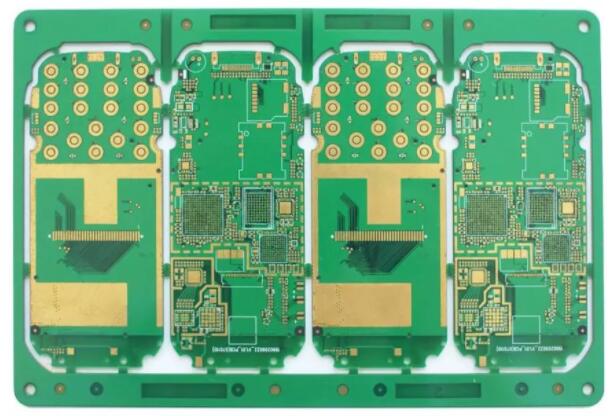Fluorine series high frequency circuit board application
The high frequency of electronic equipment is a development trend, especially with the increasing development of wireless networks and satellite communications, information products are moving towards high speed and high frequency, and communication products are moving towards the standardization of voice, video and data for wireless transmission with large capacity and speed. Therefore. The development of a new generation of products requires high-frequency circuit boards.
1. The application of high frequency circuit board is as follows:
Application place Frequency of use
Cellular & Pager Telecom.1-3 GHz
Personal receiving base station or satellite transmitting 13-24 GHz
Car Anti-collision System (CA) 75GHz
Direct Broadcast Satellite System (DBS) 13GHz
Satellite downconverter (LNB/LNA) 2-3GHZ
Home reception satellite 12-14GHz
Global Positioning System (GPS) 1.57/1.22GHz
Car, personal receiving satellite 2.4GHz
Wireless portable communication antenna system 14GHz
Satellite small ground station (VSAT) 12-14GHz
Digital microwave system (base station to base station receiving) 10-38GHz

2. The basic characteristics of high-frequency substrate materials are as follows:
1. The dielectric loss (Df) must be small, which mainly affects the quality of signal transmission. The smaller the dielectric loss, the smaller the signal loss.
2. Low water absorption and high water absorption will affect the dielectric constant and dielectric loss when damp.
3. The dielectric constant (Dk) must be small and stable, usually the smaller the better. The signal transmission rate is inversely proportional to the square root of the material's dielectric constant. High dielectric constant is likely to cause signal transmission delay.
4. Other heat resistance, chemical resistance, impact strength, peel strength, etc. must also be good.
5. The thermal expansion coefficient of the copper foil should be as consistent as possible, because the inconsistency will cause the copper foil to separate in the cold and heat changes.
3. At present, the physical properties of the three high-frequency circuit board substrates (PTFE), FR-4 or PPO substrates, which are more frequently used, are as follows:
Physical properties Fluorine-based polymer Ceramic PPO Epoxy FR-4
Dielectric constant (Dk) 3.0 0.04-3.38 0.05-4.4
Dielectric loss (Df) 10GHz 0.0013 0.0027 0.02
Peel strength (N/mm) 1.041.05 2.09 -
Thermal conductivity (W/m/0K) 0.50 0.64 -
Frequency range 300MHz-40GHz800MHz-12GHz300MHz-4GHz
Temperature range ( degree Celsius) -55-288 0-100 -50-100
Transmission speed (In/sec) 7.95 6.95 5.82
Water absorption (%) low medium high
At this stage, the three types of high-frequency substrate materials: epoxy resin, PPO resin and fluorine resin are the cheapest cost of epoxy resin and the most expensive fluorine resin; and the dielectric constant, dielectric loss, and water absorption rate are the cheapest. Considering the frequency characteristics, fluorine resin is the best and epoxy resin is inferior. When the frequency of the product application is higher than 10GHz, only the fluorine-based resin printed board can be applied. Obviously, the performance of fluorine-based resin high-frequency substrates is much higher than that of other substrates, but its shortcomings are poor rigidity and large thermal expansion coefficient in addition to high cost. For polytetrafluoroethylene (PTFE), in order to improve performance, a large amount of inorganic substances (such as silica SiO2) or glass cloth are used as reinforcing fillers to increase the rigidity of the substrate and reduce its thermal expansion. In addition, due to the molecular inertness of the PTFE resin itself, it is not easy to bond with the copper foil, so special surface treatment on the bonding surface of the copper foil is required. The treatment method includes chemical etching or plasma etching on the surface of PTFE to increase the surface roughness or add a layer of adhesive film between the copper foil and the PTFE resin to improve the bonding force, but it may affect the performance of the medium. Influence.